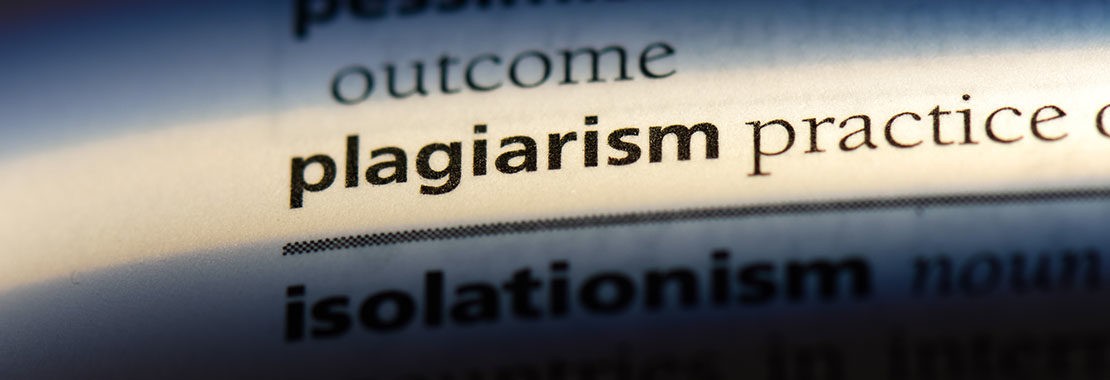Academic Integrity
Teaching students the value of academic integrity and the dangers of plagiarism should be part of any college discipline. Learning the importance of original work, intellectual property, and appropriate attribution of source material should not be exclusive to a composition course. It is, however, in such a course where I help my students take a deep dive into the nuances of research and documentation. Through years of practice, I have discovered that timely examples where I can contextualize the learning work best.
In class, we start with the concept of plagiarism as copying. We discuss how copying someone’s work can take many forms. Sometimes, copying the work of others can be seen as a form of flattery, like in copying a stylish fashion label or a home décor approach. But when words are involved, this is when problems of intellectual property arise.
Real Life Example of Plagiarism #1: Copyright Infringement in Music
Each semester, I try to find a few recent instances of controversy from the music industry to show how creative endeavors in song can take “copying” too far. We look at these through the lens of case studies in class. One of the most widely-publicized cases has been the Robin Thicke/Pharell Williams settlement of $7.4 million to the family of Marvin Gaye for copyright infringement of Gaye’s “Got to Give it Up” after release of their 2013 hit single “Blurred Lines.” We listen to this YouTube mashup of the two songs, and I ask the students to be the jury. By hearing the similarities, they begin to see that there is a difference between stylistic flattery and blatant hijacking of someone’s original work.
Once students have a basis for understanding plagiarism as copying, we then move into a discussion outside of music and look at words themselves. No one has a monopoly on words, but companies can trademark slogans, inventors can patent ideas, and authors can copyright their books. So there are standards in place for protecting language in these ways.
Real Life Example of Plagiarism #2: Speech Plagiarism
One way we look at plagiarism of words is through speeches. In 2016, Melania Trump’s Republican National Convention Speech had striking similarity to Michelle Obama’s 2008 Democratic National Convention Speech. I have students watch this video to see and hear the controversy. Although this video does not show the full speeches, this short clip allows my class to zero-in on the sections that were particularly controversial. I then share with them what Turnitin—a company with a powerful digital plagiarism detection software—found as a percentage of “unoriginal content” in this section of Trump’s speech, according to this article.
Such a discussion helps students see that an entire work does not have to be copied for there to be problems related to plagiarism. This is yet another meaningful way that I can then bridge into their own responsibilities as academic writers of essays in our college English classroom.
In previous semesters, we have discussed:
- news anchor Brian Williams
- philanthropist Greg Mortenson
- Holocaust survivor Herman Rosenblat
- non-fiction author James Frey
- New York Times journalist Jayson Blair.
I allow students to explore the popular controversy and examine the conflict and the fall-out have resulted in what seems to be a clearer understanding of the importance of the concepts we put into practice when we write.
I also want students to see that, in the public sphere, original work matters. Gross exaggerations, botched facts, sensational lies, and hijacked stories may get short-term attention, but long-term effects on credibility and job security are much greater.
There is no single way to teach skills of documentation; there is no “right way” to discuss plagiarism. Through a variety of case studies and by having students engage in the process of exploration and discussion, I hope to bring to light the importance of what we learn and create competent, careful communicators in the process.
As instructors in various disciplines discuss the importance of original work with their students, no doubt they can find appropriate examples that work well in a context that fits their class. Whether in art or music, engineering or math, science or computing, I advocate instructors share examples that will help students understand the importance of skills they may have first learned in a college English class but which extend far beyond that single discipline.

